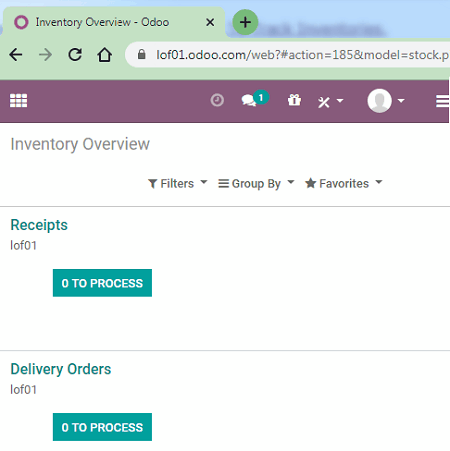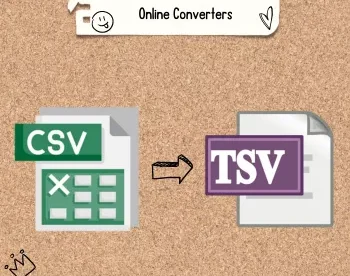4 Best Free Cloud Based Inventory Management Software
Here is a list of Best Free Cloud Based Inventory Management Software. These inventory management software are basically provided with Software as a Service license which enable users to access their records and data from anywhere. All you need is a web browser and internet connection to operate these cloud inventory software.
As the names suggests, these cloud based software help you create and maintain records of your stock items and properties which is an integral part of running a business. You can easily add inventory items and product with respective details like name, category, product, barcode, cost, price, supplier, and more. In a few cloud inventory software, you can also import inventory item list from a local CSV or Excel file. From the inventory list, you can easily view, remove, update, and manage different items. Apart from that, you can apply various filters to refine inventory list, search for a specific item from inventory, add items to your favorite list, make item shortcuts, etc.
Some software make the entire inventory management task all the more easier by providing features like departments and categories, bulk manage items, manage supplier list, and more. Additionally, you get dedicated Dashboard (to view overview) and Reports (inventory and other analysis reports) in these software. Overall, these are featured cloud inventory software that come for free or provide a free edition.
Many of these software also include other business management modules such as CRM, POS, Sales, Invoice, Staff Manager, Marketing, and more. These modules help you run your business or company effectively.
My Favorite Free Cloud Based Inventory Management Software:
I quite liked ShopKeep from this list. It is a dedicated POS software that also lets you manage your inventory. In it, you can manage items in batch, add items from local CSV or Excel file, generate reports, and more. Plus, it also contains Staff Management and Customer Manager features.
You may also like some best free Cloud CRM Software, Cloud Based CAD Software, and Cloud Based Accounting Software.
ShopKeep

ShopKeep is a nice cloud based inventory management software on this list. It is basically a POS (Point of Sale) software which also contains an Inventory Management module. Apart from inventory section, it also provides a lot more other modules which help you run and manage your business. These modules include Staff Management, Customer Manager, Marketing Dashboard, and a Reports section.
To get started with this software, sign up on its website and login with your credentials. After that, you will see a dashboard to manage different aspects of your business. One its sections is ITEMS which is basically your inventory management module. Let us checkout its Inventory Management module and what features are provided in it.
Main features of this cloud inventory software:
- Item List: You can add inventory items to this section and for that, you can choose its type from Basic Item and Item with Variants. It lets you enter various details of added items including item name, register status, department, category, UPC barcode, sales price, price type, track quantity on hand, supplier, supplier’s item ID, etc. You can find full list of added item from here and you can even filter specific items on the basis of various parameters including cost, price, supplier, category, department, etc. It also lets you export item list to a CSV file.
- Item Shortcut: You can add any of your items to this shortcut panel so that you can quickly view and manage important items.
- Update Inventory: After adding up your items, you can easily update your inventory on the basis of items’ status. Here, you can perform inventory actions including Add/ receive inventory, Remove inventory, and Count inventory. It lets you choose an inventory action, enter barcode, and then update your inventory.
- Adjust Inventory: From here, you can search for an item and add to count or replace count.
- Bulk Manage Items: As the name suggests, you can create, update, or delete items in a batch. It also lets you import items from a local CSV file.
- Departments & Categories: You can manage separate department and categories of items you have created.
- Suppler List: From this section, you can view and manage list of all your suppliers.
Advanced Features:
- It provides a Dashboard to have a quick look at your current standings such as gross sales, returns, discount, sales tax, gross margin, and various other analytics.
- You can also view and export transaction report including transaction tenders and transaction by items.
Limitations:
It has locked various features in its free version which include items report and other reports, gift cards, online ordering, integration features, etc. To unlock all these features, you can upgrade to its paid version.
Conclusion:
It is one of the easiest and best cloud based inventory management software that anyone can use without much hassle. It is well suitable for small to medium businesses.
Composity

Composity is another free cloud based inventory management software. It is basically a business management software which provides different modules and feature to run your business effectively. Inventory Management is one of its modules and others include Sales Management, Accounting Management, Projects and Tasks Management, Invoices, CRM, POS, and various other business management modules. Now, let us discuss about its Inventory Management modules as this topics is about cloud based inventory management software.
Main Features:
- You can add and manage items to your business.
- It lets you create various types inventory receipts including Release Receipt, Purchase receipts, Transfer Receipts, Revision full Receipt, and Revision part Receipt.
- It lets you export created receipts to XLS and CSV files.
- You can filter inventory receipts by date and even search for specific ones using its search bar.
Additional Features:
- From its Reports section, you can also generate a variety of reports to conclude data, such as Inventory Tree, Payment Reports, Pivot Analysis, Aging Analysis, Stock availability by location, Stock on hand, and more.
- It provides a Calendar feature too which you can use as per your requirement.
- It provides a Dashboard to quickly have a look at different aspects and analyze data from screen, e.g., Inventory Dashboard, Sales Dashboard, Invoice, CRM, and more.
- It also lets you add and manage bookmarks.
- It also offer Email and SMS integration options.
Limitations:
Do note that in the free version of this cloud inventory software, you can add up to 3 users only, manage up to 50 records/month, enter 200 CRM contacts, and get 100 MB Storage. To remove these and other limitations, you can upgrade to its paid plan.
Conclusion:
It is another good inventory management software which is cloud based. It is quite a complete package for people to manage and run their business.
Odoo

Odoo is an open source cloud based inventory management software. It is a free software with multiple business management tools including Inventory Manager. This software is available as SaaS, on web, Android and iPhone, as well as for Windows desktop users. However, its community edition is the version you can use for free with some limitations.
This software provides different apps to manage individual aspects of a business or company. For example, CRM, ERP, Inventory, POS, Human Resource, Timesheet, Marketting, Invoice, and more. To manage inventory, you need to get Inventory app from its Apps section. After that, you can get started with creating and managing your stock records. Let’s see what are the features that you get in Inventory app of Odoo.
Key Features:
- Master Data: It is the feature that basically lets you create and add items to your inventory and maintain its record. Apart from manually creating a list, you can also import a CSV or Excel spreadsheet to add multiple inventory items quickly. Plus, you get Filters, Search bar, Group by, and Favorites options that further help you manage inventory items easily. It also provides a handy feature named Reordering Rule. Using it, you can create a reordering rule defining a minimum stock rule. One the basis of defined rule, Odoo automatically create quotations or draft manufacturing orders’ requests for resupplying your stock.
- Operations: You can perform various inventory operation which may include creating product transfers, making inventory adjustments, scrapping a product out of inventory, and running a scheduler.
- Reporting: You can also generate a report to analyse inventory data including Warehouse Analysis Report, Inventory Report, Forecasted Inventory Report, and Product Moves.
Besides mentioned inventory management features, you can view inventory overview and configure product categories, operation types, and other settings like barcode scanner, email confirmation, storage locations, etc.
Limitations:
- In the free (community) version of this software, you can only install one app for free.
Conclusion:
It is a nice and simple cloud based inventory management software which provides all essential features to maintain your inventory record.
Stockpile (From Canvus)

Stockpile is a cloud based inventory management software especially designed for small business. You can easily sign up to this SaaS (Software as a Service) and quickly get started to your inventory management. It provides quite basic functionalities and hence, is suitable for startup and small businesses. Now, let me list down main features of this cloud inventory software.
Key Features:
- You can add items to your inventory with details such as SKU, UPC, Labels, Area, Manufacturer, Transaction Date, Total Quantity, Unit Cost, Item Picture, etc.
- It lets you add multiple areas to which your business is targeted.
- It also lets you add and manage multiple locations with respective street address, city, zip code, etc.
- It lets you enter and manage different manufacturers in a distinct section.
- You can also add users by assigning a particular role from Basic User, Manager, and Reporting Only. You can set a password for different users.
- You can activate or deactivate an area, location, and manufacturer as per their current status.
Additional Features:
- It provides a Serial Number Search feature to find transaction history for a serial number.
- You can find a dedicated Reports section which can generate reports for inventory transactions, daily transactions, new stock counts, current stock table, current stock list, low stock list, and out of stock list.
- When needed, you can also reset you company and delete existing inventory to start from scratch.
- You can set your currency and minimum stock count by going to its Preferences.
Conclusion:
It is a basic cloud inventory software which provides some standard features to create and manage inventory.
About Us
We are the team behind some of the most popular tech blogs, like: I LoveFree Software and Windows 8 Freeware.
More About UsArchives
- May 2024
- April 2024
- March 2024
- February 2024
- January 2024
- December 2023
- November 2023
- October 2023
- September 2023
- August 2023
- July 2023
- June 2023
- May 2023
- April 2023
- March 2023
- February 2023
- January 2023
- December 2022
- November 2022
- October 2022
- September 2022
- August 2022
- July 2022
- June 2022
- May 2022
- April 2022
- March 2022
- February 2022
- January 2022
- December 2021
- November 2021
- October 2021
- September 2021
- August 2021
- July 2021
- June 2021
- May 2021
- April 2021
- March 2021
- February 2021
- January 2021
- December 2020
- November 2020
- October 2020
- September 2020
- August 2020
- July 2020
- June 2020
- May 2020
- April 2020
- March 2020
- February 2020
- January 2020
- December 2019
- November 2019
- October 2019
- September 2019
- August 2019
- July 2019
- June 2019
- May 2019
- April 2019
- March 2019
- February 2019
- January 2019
- December 2018
- November 2018
- October 2018
- September 2018
- August 2018
- July 2018
- June 2018
- May 2018
- April 2018
- March 2018
- February 2018
- January 2018
- December 2017
- November 2017
- October 2017
- September 2017
- August 2017
- July 2017
- June 2017
- May 2017
- April 2017
- March 2017
- February 2017
- January 2017
- December 2016
- November 2016
- October 2016
- September 2016
- August 2016
- July 2016
- June 2016
- May 2016
- April 2016
- March 2016
- February 2016
- January 2016
- December 2015
- November 2015
- October 2015
- September 2015
- August 2015
- July 2015
- June 2015
- May 2015
- April 2015
- March 2015
- February 2015
- January 2015
- December 2014
- November 2014
- October 2014
- September 2014
- August 2014
- July 2014
- June 2014
- May 2014
- April 2014
- March 2014








